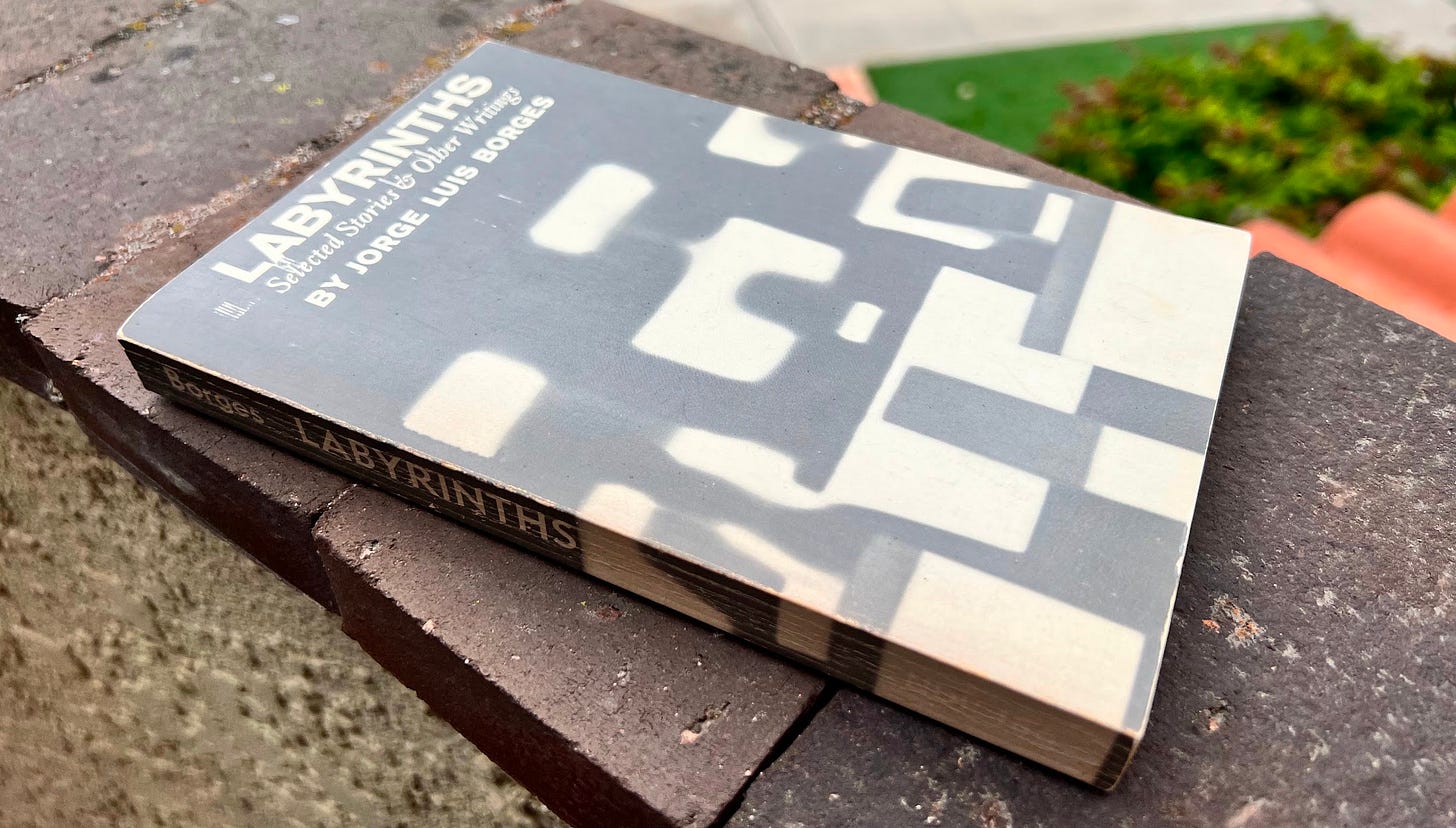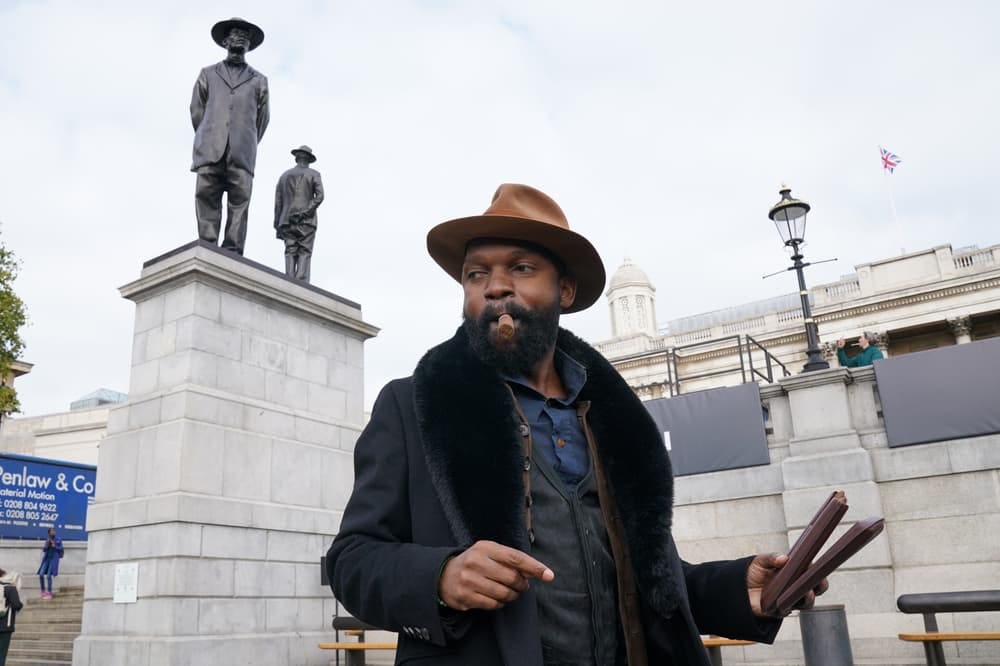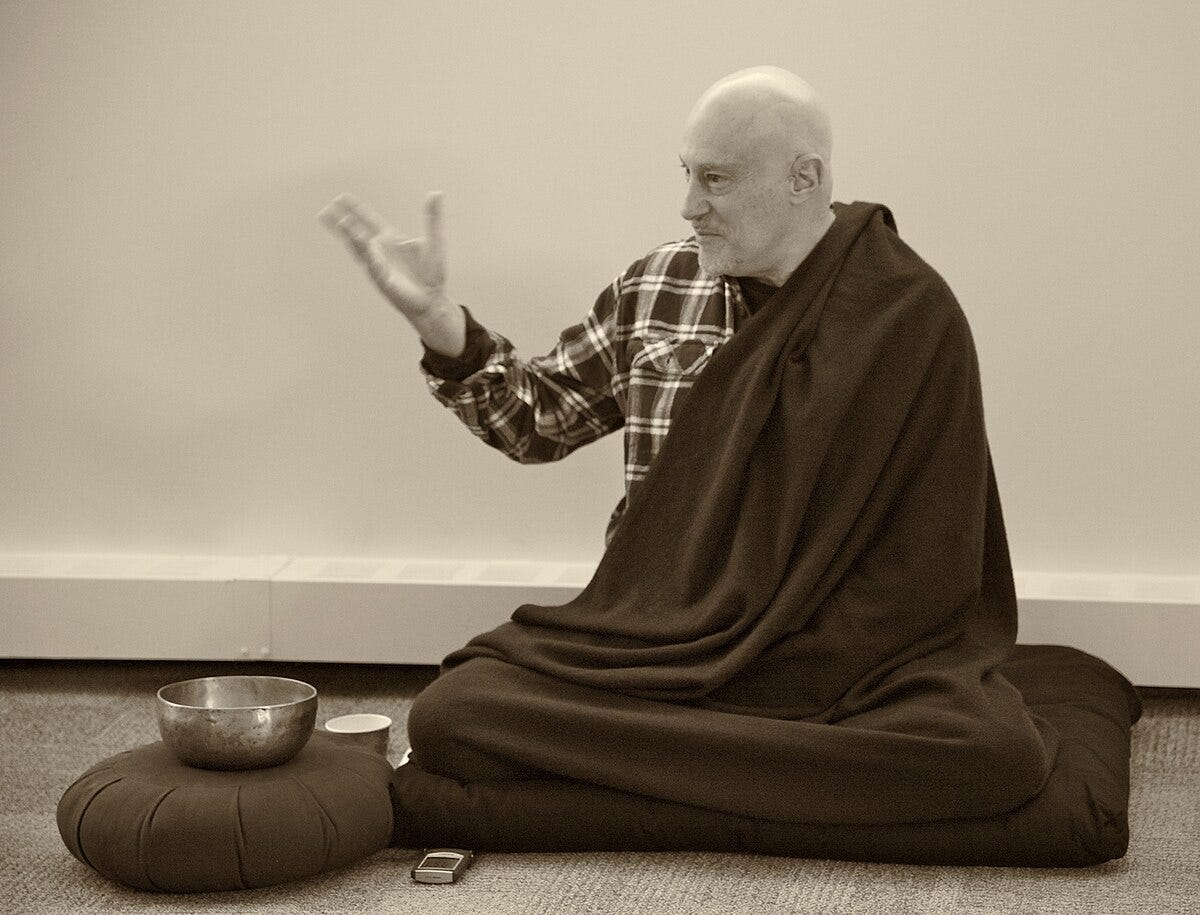10 cultural influences woven into my DNA
The key people, places, and things that have shaped me
One of the most exciting parts of creating The Labyrinth has been discovering my unique voice. After years of self-consciously imitating other writers and artists, it’s been exhilarating to finally sound like myself.
But, last night, a question occurred to me:
If my writing were a strand of DNA, what influences would be woven into it?
That question led me to compile a (freakishly long) list of cultural, literary, cinematic, and other kinds of influences, which I mercifully decided to whittle down to 10 here. This list is completely arbitrary—on another day, I could just as easily have chosen another 10. I tried to pick 10 different categories of influences: places, people, films, books, etc.
Let’s unravel the strands, shall we?
#10. GarageBand
The first time I used GarageBand was a quasi-religious experience. I was no older than 15, with about a decade of unenthusiastic piano playing under my belt. Suddenly, I could plug a MIDI keyboard into my (dad’s) Mac and I could play any instrument in the world.
I’m sure my music from that era is unlistenable now, but at the time I felt like I was making Sgt. Pepper's Lonely Hearts Club Band. I’ve since moved to Logic Pro, but GarageBand will always hold a special place in my heart.
#9. Sight and Sound’s “Greatest Films of All Time” list
Every decade, the British Film Institute releases a poll of the greatest films of all time. The 2012 list was also released when I was 15, and just starting to develop my personal taste. Compared to other lists (Rotten Tomatoes, IMDb), Sight and Sound’s was more…sensual? Foreign? Deeply felt?
Something about those films captivated me, and I would spend my college years picking up a Film & Media Studies minor so I could justify watching more of them.
#8. Labyrinths by Jorge Luis Borges
Whatever you do, don’t mix up labyrinths with mazes. Whereas a maze is chaotic and unstructured, labyrinths are carefully designed. It’s impossible to get lost in one.
When I discovered Jorge Luis Borges’s short story collection Labyrinths, I felt as if he’d constructed a dozen literary labyrinths. Each brief story describes an alternate world with different rules from our own. Here, all actions are determined by lottery. There, the universe is a library filled with endless meaningless books. As existentially terrifying as some of the stories can be, I find comfort in knowing that there’s at least some order in the cosmos.
#7. Twin Peaks
I was not alive in 1991, when the second season of Twin Peaks ended with Laura Palmer declaring “I’ll see you in 25 years.” But I was alive 25 years later, when David Lynch delivered on the promise.
Throughout its three seasons and film, Twin Peaks pulls off a balancing act. Its surface is comfortable: coffee, cherry pie, fish in the percolator. But its depths are pitch black: sexual abuse, the atomic bomb, the generational impact of violence. When I watched Twin Peaks, it felt true like nothing else ever had. This show understands trauma. The profane is what makes the sacred more sacred. Blood is what makes the cherry pie sweeter.
#6. The film Sans Soleil
I never saw myself in a film until I saw Sans Soleil. Normal movies, great as they are, are always about people who act: cowboys, superheroes, astronauts. But where were the people who looked?
Chris Marker’s Sans Soleil is, allegedly, a documentary, but it’s really a glimpse into another person’s mind. And what a mind it is. In it, Marker generously offers footage from around the world, coupled with philosophical narration and dense soundscapes. The film itself feels like entering a trance state. It made me want to be a filmmaker, a writer, and, above all, someone who sees.
#5. The artist Samson Kambalu
Samson Kambalu is a Malawi-born visual artist, author, and—for a blessed three months—my writing teacher. He is, by every conceivable metric, 100x cooler than me.
Just by observing him, I learned by osmosis how to create, how to look, and how to write. No comment has shaped my writing more than this one, given after I read him something convoluted:
Approach deep problems like cold baths: quickly into them and quickly out again.
I later learned he was quoting Nietzsche. But let’s move on from this quickly. The water’s getting cold.
#4. The comedy of Julio Torres
The vast majority of comedians our culture has celebrated are straight white men. You know this. I know this.
When my friends started showing me the comedy of Julio Torres, I felt seen in a way I never had before. Here was someone queer, Hispanic, and shamelessly odd. He doesn’t joke about football or sex; he jokes about the odd specificity of sensitive boys and adult film extras who take their jobs way too seriously. As much as Borges and David Lynch inspire me, my real template for living is actually Julio Torres. Quick wit and aesthetic sensitivity are a winning combo.
#3. Kate Bush’s Hounds of Love
It’s 2021. We’re a year into the pandemic, and my housemates are tired of me going to the attic to listen to Hounds of Love again. You know the singles — “Running Up That Hill,” “Cloudbusting” — but the album’s second half is where it earns its immortal status.
Like Twin Peaks, Hounds of Love depicts a trauma (a near-death experience falling through ice) and the ornate layers of spirituality that envelop it. Kate goes occult (“Waking the Witch,” my personal favorite), dissociates (“Watching You Without Me”), and blasts off (“Hello Earth”), but when she touches down, her message is shockingly, beautifully simple:
I'll tell my mother
I'll tell my father
I'll tell my loved ones
I'll tell my brothers
How much I love them
#2. Recurse Center
Recurse Center is a free, self-directed retreat for programmers to learn and teach each other. I attended RC in the summer of 2023, hoping to land a new job. I got a lot more than I bargained for.
Nobody at RC taught me anything, and yet I learned more that summer than ever before. Seemingly out of nowhere, I decided to start and lead a class on design thinking, where I learned how to learn, how to teach, and how to lead. RC invested me with a stubbornly independent spirit, never content with the status quo and always eager to learn more.
#1. Shinzen Young’s “Do Nothing” meditation technique
In fall 2023, I was getting sick of meditation. I was tired of the breath. I couldn’t do another body scan. I thought I can’t do this anymore.
That’s when I discovered Do Nothing, from the meditation teacher Shinzen Young. I’m suspicious of scams, but this technique is not trademarked, not monetized, and consists of two lines:
Let whatever happens happen.
As soon as you become aware of the intention to control your attention, drop that intention.
I have done nothing every day since then, and everything is different. As modest as the instruction sounds, this “intention to control your attention” is basically the driving force behind the experience of separateness, suffering, and confusion about reality. Turning off that circuit in my brain has been like closing out 1,000 unnecessary programs on my laptop.
And with that extra energy, I can do…stuff like this.
Are any of these part of your DNA as well? What would you put on your list of cultural influences?
I’d love to hear in the comment section below!










Interesting premise, Rey. I was just talking to Mama about the very things that she would describe as cultural essential components of her "DNA". She didn't have a t.v. or film until about her 7trh or 8th birthday. Instead, she and her older siblings, specially Tio Jorge, read a life-altering (to them) book called "Corazón: Diario de un niño" by Edmondo De Amicis. Mama still can quote the last line, "Y yo, yo no pude decir nada". These components or "threads" that are woven in Mama, like those woven in you, are perishable and corruptible. Culture itself is perishable as what was life-altering to one, is overly sentimental to others. These threads are always buried with the ashes of the person that carried them. Mama describes the moment when an actual grocery store (La Comercial Mexicana) was put in Mexico DF. This destroyed a certain culture and transformed Mama's. (Remember, Mama lives for the grocery store culture, particularly HEB here in Texas).
Personally, my own book DNA's have always been two vertices: The Little Prince by Antoine de Saint-Exupéry (What is essential is invisible to the eye), and Pearl S. Buck's The Good Earth (If you sell the land, it is the end). Both of these books have spoken to me since childhood. I read them each every few years and they still surprise me. On one hand, The Little Prince helped me discover the transcendent. On the other hand, The Good Earth, helped me appreciate the material.
Uncle Bill's strongest cultural thread, for many reasons is Charlie and the Chocolate Factory (book, then movie, then songs). Not so much because they shaped him, but because he felt truly immersed and wrapped in the fantasy version of his own every-day life. They colored his childhood.
These little threads, as you describe them, are little whispers of where you have been and how you see the world. Your identity, however, now, and eternally is defined by God's love and purpose for you. We are journeying to Heaven; all these threads are used for this weird, wonderful, miraculous trip.
Wow! That last bit about meditation just blew my mind! Will definitely need to give that a try!